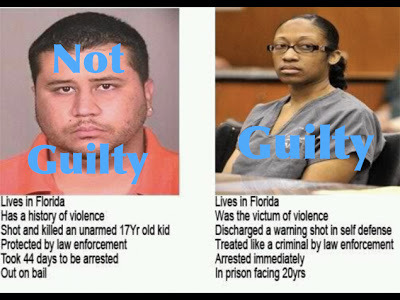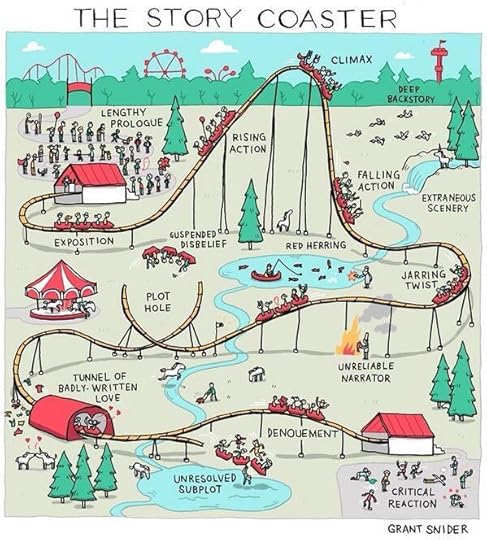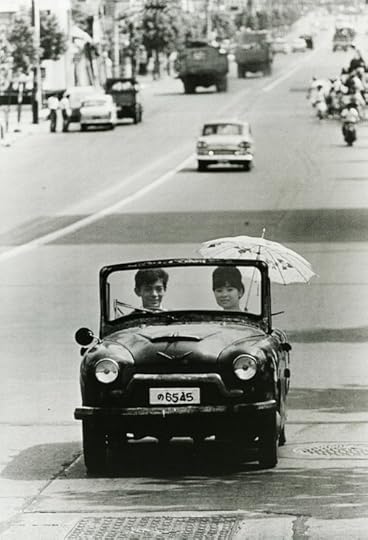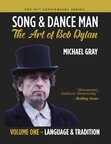Michael Gray's Blog, page 12
July 25, 2013
THE LATE STEVE GOODMAN
Steve Goodman would have turned 65 today, though he died at just 36. Here's his 'City of New Orleans':
and here's his 'My Old Man' (also live, and later):
In that song, he says his father only made it to 58; Steve himself only made it to 36.
Here's his entry in The Bob Dylan Encyclopedia:
Goodman, Steve [1948 - 1984]Steve Goodman was born on Chicago’s North Side on July 25, 1948, the son of a used car salesman, about whom Steve eventually wrote the song ‘My Old Man’. He started learning guitar and writing songs as a young teenager and while at Lake Forest College and the University of Illinois he began to perform in a local club, soon dropping out of college (in 1969) to make music his career. In this he was never financially successful, though he survived early on by writing and singing advertising jingles. He returned to Chicago after a short stint trying his luck in Greenwich Village and in 1971 was recorded performing live on a local album, Gathering at the Earl of Old Town. A support spot to KRIS KRISTOFFERSON that April led to a record deal with Buddah and a first album, Steve Goodman, in 1971. Typically, as soon as Goodman had Kristofferson’s attention, he insisted he go and hear another performer who deserved to be discovered too - his friend JOHN PRINE, whose song ‘Donald and Lydia’ Goodman would cover on his own début album. That album also offers Goodman’s signature song, ‘City of New Orleans’, which was a hit not for Goodman but for ARLO GUTHRIE - and then again, the year of Goodman’s death, a hit for WILLIE NELSON. Also on Steve Goodman’s first album is the good-natured parody of a country song ‘You Never Even Call Me By My Name’ (which Prine had co-written but wouldn’t take credit for); this too would become a hit, a couple of years later and for David Allen Coe. All this tells the Goodman story: he wrote songs others had hits with, and he was, as writer and performer too, much admired by big-name fellow performers. He was a fine guitarist (he plays on all Prine’s early albums, just as Prine plays on his) and it’s said that when, in solo performances, he broke a guitar string, which was often, he would keep singing while getting a new string out of his pocket, fitting and tuning it, and would then resume his playing unphased - yet he never broke through as a performer himself.
In September 1972, with Arif Mardin as producer, Goodman went into Atlantic’s studios in New York to make his second album, Somebody Else’s Troubles, and a single, ‘Election Year Rag’, and for that single, and for the album’s title track, Bob Dylan was a participant. It’s said that Goodman was frustrated at Dylan’s turning up hours and hours late, and perhaps this is why he doesn’t appear on the rest of the material, but he plays piano and sings harmony vocals on these two tracks (both penned by Goodman), along with DAVID BROMBERG on dobro and mandolin, and Prine, among others. The album also included the song that Goodman would come nearest to having a hit with, ‘The Dutchman’ - the one song he didn’t write. When the album was issued, in early 1973, Dylan was credited as Robert Milkwood Thomas. Though Buddah issued The Essential Steve Goodman in 1974 (which also featured ‘Election Year Rag’), it was 1975 before Goodman made his next album, when a label switch gave him greater encouragement and saw an increase in his output. The 1975 album was Jessie’s Jig & Other Favorites; then came Words We Can Dance To (1976), Say It In Private (1977) and High and Outside (1978), which included a duet with then-newcomer Nicolette Larson, and Hot Spot (1980). ‘Chicago Shorty’, as he was dubbed by friends, had also acted as a producer, notably of John Prine’s 1978 album Bruised Orange, and formed his own label, Red Pajama Records, for which he duly recorded Artistic Hair and Affordable Art (both 1983) and his last album, Santa Ana Winds, which reached record stores the day after his death. Goodman had been suffering from leukemia all his adult life, and from Chicago made regular and frequent trips to New York for treatment. He moved to the West Coast (to Seal Beach, just below Long Beach, in Southern California) at the beginning of the 1980s, and received treatment in Seattle. The Artistic Hair album cover depicted him standing in front of a hairdressing salon of that name, his own head bald from the effects of chemotherapy. On August 31, 1984 underwent a bone marrow transpant. Twenty days later he died of the liver and kidney failure brought on by his leukemia in hospital in Seattle. He was 36.
[Steve Goodman: ‘Eight Ball’, ‘Chicago Bust Rag’ & ‘City of New Orleans’, Chicago 1970-71, on Various Artists, Gathering at the Earl of Old Town, Dunwich 670, Chicago, 1971, CD-reissued Mountain Railroad, US, 1989; Steve Goodman, NY, 1971, Buddah BDS-5096, US, 1971-2; Somebody Else’s Troubles, NY, Sep 1972, Buddah BDS-5121, US, 1973; ‘Election Year Rag’, Buddah BDA-326, 1973; Artistic Hair, Red Pajama 001, US, 1983; Affordable Art, Red Pajama 002, 1983; Santa Ana Winds, Red Pajama 003, 1984. Many posthumous recordings have been issued, and CD-reissues of the original LPs, some remastered and with extra tracks. There is also a video, Steve Goodman Live From Austin City Limits…And More!, including Prine, Guthrie & Kristofferson, nia, US, 2003.]
and here's his 'My Old Man' (also live, and later):
In that song, he says his father only made it to 58; Steve himself only made it to 36.
Here's his entry in The Bob Dylan Encyclopedia:
Goodman, Steve [1948 - 1984]Steve Goodman was born on Chicago’s North Side on July 25, 1948, the son of a used car salesman, about whom Steve eventually wrote the song ‘My Old Man’. He started learning guitar and writing songs as a young teenager and while at Lake Forest College and the University of Illinois he began to perform in a local club, soon dropping out of college (in 1969) to make music his career. In this he was never financially successful, though he survived early on by writing and singing advertising jingles. He returned to Chicago after a short stint trying his luck in Greenwich Village and in 1971 was recorded performing live on a local album, Gathering at the Earl of Old Town. A support spot to KRIS KRISTOFFERSON that April led to a record deal with Buddah and a first album, Steve Goodman, in 1971. Typically, as soon as Goodman had Kristofferson’s attention, he insisted he go and hear another performer who deserved to be discovered too - his friend JOHN PRINE, whose song ‘Donald and Lydia’ Goodman would cover on his own début album. That album also offers Goodman’s signature song, ‘City of New Orleans’, which was a hit not for Goodman but for ARLO GUTHRIE - and then again, the year of Goodman’s death, a hit for WILLIE NELSON. Also on Steve Goodman’s first album is the good-natured parody of a country song ‘You Never Even Call Me By My Name’ (which Prine had co-written but wouldn’t take credit for); this too would become a hit, a couple of years later and for David Allen Coe. All this tells the Goodman story: he wrote songs others had hits with, and he was, as writer and performer too, much admired by big-name fellow performers. He was a fine guitarist (he plays on all Prine’s early albums, just as Prine plays on his) and it’s said that when, in solo performances, he broke a guitar string, which was often, he would keep singing while getting a new string out of his pocket, fitting and tuning it, and would then resume his playing unphased - yet he never broke through as a performer himself.
In September 1972, with Arif Mardin as producer, Goodman went into Atlantic’s studios in New York to make his second album, Somebody Else’s Troubles, and a single, ‘Election Year Rag’, and for that single, and for the album’s title track, Bob Dylan was a participant. It’s said that Goodman was frustrated at Dylan’s turning up hours and hours late, and perhaps this is why he doesn’t appear on the rest of the material, but he plays piano and sings harmony vocals on these two tracks (both penned by Goodman), along with DAVID BROMBERG on dobro and mandolin, and Prine, among others. The album also included the song that Goodman would come nearest to having a hit with, ‘The Dutchman’ - the one song he didn’t write. When the album was issued, in early 1973, Dylan was credited as Robert Milkwood Thomas. Though Buddah issued The Essential Steve Goodman in 1974 (which also featured ‘Election Year Rag’), it was 1975 before Goodman made his next album, when a label switch gave him greater encouragement and saw an increase in his output. The 1975 album was Jessie’s Jig & Other Favorites; then came Words We Can Dance To (1976), Say It In Private (1977) and High and Outside (1978), which included a duet with then-newcomer Nicolette Larson, and Hot Spot (1980). ‘Chicago Shorty’, as he was dubbed by friends, had also acted as a producer, notably of John Prine’s 1978 album Bruised Orange, and formed his own label, Red Pajama Records, for which he duly recorded Artistic Hair and Affordable Art (both 1983) and his last album, Santa Ana Winds, which reached record stores the day after his death. Goodman had been suffering from leukemia all his adult life, and from Chicago made regular and frequent trips to New York for treatment. He moved to the West Coast (to Seal Beach, just below Long Beach, in Southern California) at the beginning of the 1980s, and received treatment in Seattle. The Artistic Hair album cover depicted him standing in front of a hairdressing salon of that name, his own head bald from the effects of chemotherapy. On August 31, 1984 underwent a bone marrow transpant. Twenty days later he died of the liver and kidney failure brought on by his leukemia in hospital in Seattle. He was 36.
[Steve Goodman: ‘Eight Ball’, ‘Chicago Bust Rag’ & ‘City of New Orleans’, Chicago 1970-71, on Various Artists, Gathering at the Earl of Old Town, Dunwich 670, Chicago, 1971, CD-reissued Mountain Railroad, US, 1989; Steve Goodman, NY, 1971, Buddah BDS-5096, US, 1971-2; Somebody Else’s Troubles, NY, Sep 1972, Buddah BDS-5121, US, 1973; ‘Election Year Rag’, Buddah BDA-326, 1973; Artistic Hair, Red Pajama 001, US, 1983; Affordable Art, Red Pajama 002, 1983; Santa Ana Winds, Red Pajama 003, 1984. Many posthumous recordings have been issued, and CD-reissues of the original LPs, some remastered and with extra tracks. There is also a video, Steve Goodman Live From Austin City Limits…And More!, including Prine, Guthrie & Kristofferson, nia, US, 2003.]
Published on July 25, 2013 00:04
July 19, 2013
JEFF BUCKLEY'S 'IF YOU SEE HER...'
I don't know whether I like this or not. Do you?
Published on July 19, 2013 00:54
July 16, 2013
ANOTHER SELF PORTRAIT: TRACK LIST
From the official press release (issued 9am EST Tuesday July 16, 2013):
Bob Dylan has created a new painting as the cover art for The Bootleg Series, Vol. 10 - Another Self Portrait (1969-1971).
The Bootleg Series, Vol. 10 - Another Self Portrait (1969-1971) will be available in a standard two-disc configuration as well as in a four-disc deluxe boxed set which will include, for the first time ever, the complete historic performance by Bob Dylan and The Band from Isle of Wight Festival on August 31, 1969. Housed in a slipcase, the deluxe edition will include the newly remastered version of the 1970 Self Portrait album, in its entirety with original sequencing, in addition to two hardcover books featuring revisionist liner notes penned by Greil Marcus (author of the notorious "What is this shit?" 1970 Self Portrait review in Rolling Stone).
A vinyl version of The Bootleg Series, Vol. 10 - Another Self Portrait (1969-1971) will include the album's 35 tracks on three LPs plus a 12" x 12" booklet.
The Bootleg Series, Vol. 10 - Another Self Portrait (1969-1971) CD 11 Went To see The Gypsy (demo) 2 Little Sadie (without overdubs, Self Portrait)3 Pretty Saro (unreleased, Self Portrait)4 Alberta #3 (alternate version, Self Portrait)5 Spanish Is The Loving Tongue (unreleased, New Morning)6 Annie's Going To Sing Her Song (unreleased, Self Portrait)7 Time Passes Slowly #1 (alternate version, New Morning)8 Only A Hobo (unreleased, Greatest Hits II)9 Minstrel Boy (unreleased, The Basement Tapes)10 I Threw It All Away (alternate version, Nashville Skyline)11 Railroad Bill (unreleased, Self Portrait)12 Thirsty Boots (unreleased, Self Portrait)13 This Evening So Soon (unreleased, Self Portrait)14 These Hands (unreleased, Self Portrait)15 In Search of Little Sadie (without overdubs, Self Portrait)16 House Carpenter (unreleased, Self Portrait)17 All The Tired Horses (without overdubs, Self Portrait)
The Bootleg Series, Vol. 10 - Another Self Portrait (1969-1971) CD 21 If Not For You (alternate version, New Morning)2 Wallflower (alternate version, 1971)3 Wigwam (original version without overdubs, Self Portrait)4 Days Of '49 (original version without overdubs, Self Portrait)5 Working On A Guru (unreleased, New Morning)6 Country Pie (alternate version, Nashville Skyline)7 I'll Be Your Baby Tonight (Live With The Band, Isle Of Wight 1969)8 Highway 61 (Live With The Band, Isle Of Wight 1969)9 Copper Kettle (without overdubs, Self Portrait)10 Bring Me A Little Water (unreleased, New Morning)11 Sign On The Window (with orchestral overdubs, New Morning)12 Tattle O'Day (unreleased, Self Portrait)13 If Dogs Run Free (alternate version, New Morning)14 New Morning (with horn section overdubs, New Morning)15 Went To See The Gypsy (alternate version, New Morning)16 Belle Isle (without overdubs, Self Portrait)17 Time Passes Slowly #2 (alternate version, New Morning)18 When I Paint My Masterpiece (demo)
Bob Dylan & The Band Isle of Wight - August 31, 19691 She Belongs To Me2 I Threw It All Away3 Maggie’s Farm4 Wild Mountain Thyme5 It Ain't Me, Babe6 To Ramona 7 Mr. Tambourine Man8 I Dreamed I Saw St. Augustine9 Lay Lady Lay10 Highway 61 Revisited11 One Too Many Mornings12 I Pity The Poor Immigrant13 Like A Rolling Stone14 I’ll Be Your Baby Tonight15 Quinn The Eskimo (The Mighty Quinn)16 Minstrel Boy17 Rainy Day Women #12 & 35
Bob Dylan has created a new painting as the cover art for The Bootleg Series, Vol. 10 - Another Self Portrait (1969-1971).
The Bootleg Series, Vol. 10 - Another Self Portrait (1969-1971) will be available in a standard two-disc configuration as well as in a four-disc deluxe boxed set which will include, for the first time ever, the complete historic performance by Bob Dylan and The Band from Isle of Wight Festival on August 31, 1969. Housed in a slipcase, the deluxe edition will include the newly remastered version of the 1970 Self Portrait album, in its entirety with original sequencing, in addition to two hardcover books featuring revisionist liner notes penned by Greil Marcus (author of the notorious "What is this shit?" 1970 Self Portrait review in Rolling Stone).
A vinyl version of The Bootleg Series, Vol. 10 - Another Self Portrait (1969-1971) will include the album's 35 tracks on three LPs plus a 12" x 12" booklet.
The Bootleg Series, Vol. 10 - Another Self Portrait (1969-1971) CD 11 Went To see The Gypsy (demo) 2 Little Sadie (without overdubs, Self Portrait)3 Pretty Saro (unreleased, Self Portrait)4 Alberta #3 (alternate version, Self Portrait)5 Spanish Is The Loving Tongue (unreleased, New Morning)6 Annie's Going To Sing Her Song (unreleased, Self Portrait)7 Time Passes Slowly #1 (alternate version, New Morning)8 Only A Hobo (unreleased, Greatest Hits II)9 Minstrel Boy (unreleased, The Basement Tapes)10 I Threw It All Away (alternate version, Nashville Skyline)11 Railroad Bill (unreleased, Self Portrait)12 Thirsty Boots (unreleased, Self Portrait)13 This Evening So Soon (unreleased, Self Portrait)14 These Hands (unreleased, Self Portrait)15 In Search of Little Sadie (without overdubs, Self Portrait)16 House Carpenter (unreleased, Self Portrait)17 All The Tired Horses (without overdubs, Self Portrait)
The Bootleg Series, Vol. 10 - Another Self Portrait (1969-1971) CD 21 If Not For You (alternate version, New Morning)2 Wallflower (alternate version, 1971)3 Wigwam (original version without overdubs, Self Portrait)4 Days Of '49 (original version without overdubs, Self Portrait)5 Working On A Guru (unreleased, New Morning)6 Country Pie (alternate version, Nashville Skyline)7 I'll Be Your Baby Tonight (Live With The Band, Isle Of Wight 1969)8 Highway 61 (Live With The Band, Isle Of Wight 1969)9 Copper Kettle (without overdubs, Self Portrait)10 Bring Me A Little Water (unreleased, New Morning)11 Sign On The Window (with orchestral overdubs, New Morning)12 Tattle O'Day (unreleased, Self Portrait)13 If Dogs Run Free (alternate version, New Morning)14 New Morning (with horn section overdubs, New Morning)15 Went To See The Gypsy (alternate version, New Morning)16 Belle Isle (without overdubs, Self Portrait)17 Time Passes Slowly #2 (alternate version, New Morning)18 When I Paint My Masterpiece (demo)
Bob Dylan & The Band Isle of Wight - August 31, 19691 She Belongs To Me2 I Threw It All Away3 Maggie’s Farm4 Wild Mountain Thyme5 It Ain't Me, Babe6 To Ramona 7 Mr. Tambourine Man8 I Dreamed I Saw St. Augustine9 Lay Lady Lay10 Highway 61 Revisited11 One Too Many Mornings12 I Pity The Poor Immigrant13 Like A Rolling Stone14 I’ll Be Your Baby Tonight15 Quinn The Eskimo (The Mighty Quinn)16 Minstrel Boy17 Rainy Day Women #12 & 35
Published on July 16, 2013 06:00
July 15, 2013
July 14, 2013
BURY THE RAG DEEP IN YOUR FACE...
Published on July 14, 2013 12:02
July 13, 2013
BOB & BOBBY MEET AGAIN
On July 10 Dylan performed in St.Paul, Minnesota - where Dylan once lived in Dinkytown - and in amongst a largely predictable set, he sang ‘Suzie Baby', the song on the A-side of Bobby Vee's first single, issued in 1959, back when Vee was a wannabe Buddy Holly, and very young.
Dylan sang ‘Suzie Baby' because Bobby Vee, now age 70, was in the audience. Intoducing this one-off cover, Dylan said:
‘I used to live here, and then I left ... I've shared the stage with everyone from Mick Jagger to Madonna, but the most beautiful person I've ever been on stage with is Bobby Vee. He used to sing a song called ‘Suzie Baby' ...Please show your appreciation ... with a round of applause. We’re gonna try and do this song, like I’ve done it with him before once or twice.'
They met up again that night, and Vee's great-niece snapped the moment:
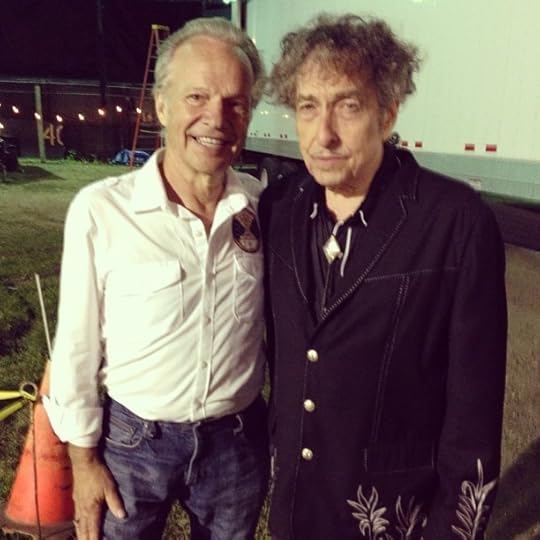
I was lucky enough to meet Mr. V myself, at the Dylan Symposium at the University of Minnesota in March 2007. He signed my own hardback copy of The Bob Dylan Encyclopedia right alongside his entry in it, and I told him I'd seen him perform at Liverpool Empire in the early 1960s, when he was topping a bill that featured a charismatic 16-year-old Tony Orlando and the wonderful Clarence Frogman Henry - and I was surprised and pleased when he told me he'd been speaking to Clarence just a few weeks earlier.
Here's that entry from my Encyclopedia:
Vee, Bobby [1943 - ]
Robert Thomas Velline was born in Fargo, North Dakota on April 30, 1943, and grew up via rockabilly to be a teenage pop star. By the time Bob Dylan was ‘making it’ in 1963, Vee, two years younger, was already struggling to hold on to pop stardom.
Dylan played piano in Bobby Vee’s band for a very brief period in 1959. Vee has told the story many times, as here:
‘After we recorded Suzie Baby, we started getting out and we were a rhythm band with guitar, bass and drums. My brother Bill played lead guitar and I played rhythm guitar and we would switch round from time to time. We were looking for a piano player… as we had seen Jerry Lee Lewis as the opening act on a country show and he just tore it up… Bill was in a record shop called Sam’s Record Land in Fargo and this guy approached him and introduced himself as Elston Gunn...and said that he had got off the road with Conway Twitty as his piano player. Bill was blown away. He took him to the radio station where there was a piano and he rocked out pretty good in the key of C and we thought we would give him a try.
‘He hadn’t played with Conway Twitty. Conway Twitty had been in the area and Dylan had seen him in Duluth a couple of nights earlier and then he came down to Fargo and was working as a busboy at the Red Apple Café. It was not meant to be, he didn’t have a piano and we didn’t have enough money to buy him one. He stuck around a couple of days and then he headed off to Minneapolis and then went to Greenwich Village where he became Bob Dylan. He came through my hometown about five years ago and I saw him then. I was amazed at how much he remembered as that was such a small slice of his life. He even remembered where my dad worked.’
Dylan’s comments on Vee in Chronicles Volume One add little to this account, but he recalls that he used the great pseudonym Elston Gunn at the time, says that he and this ‘old friend and fellow performer… had a lot in common, even though our paths would take such different directions’, and acknowledges that ‘he was a great rockabilly singer’ before he ‘crossed over’ to become a pop star. But though Dylan recalls that they saw each when Bob was singing in folk clubs and Vee was ‘on the top of the heap’ at the Paramount in Brooklyn with an array of other stars, he gives no account of the more recent visit that so impressed Vee.
____UPDATE: You might think from the photograph above that Bobby V certainly looks his two years younger than Bobby D, but sadly he isn't as healthy as he seems. On April 30 last year, his 69th birthday, he announced on his website that he had Alzheimer's .
[Bob Dylan Encyclopedia footnotes: Bobby Vee quoted from undated interview by Spencer Leigh in Baby, That Is Rock and Roll: American Pop 1954-1963, p.137. Bob Dylan: Chronicles Volume One, pp.78-80.]
Dylan sang ‘Suzie Baby' because Bobby Vee, now age 70, was in the audience. Intoducing this one-off cover, Dylan said:
‘I used to live here, and then I left ... I've shared the stage with everyone from Mick Jagger to Madonna, but the most beautiful person I've ever been on stage with is Bobby Vee. He used to sing a song called ‘Suzie Baby' ...Please show your appreciation ... with a round of applause. We’re gonna try and do this song, like I’ve done it with him before once or twice.'
They met up again that night, and Vee's great-niece snapped the moment:

I was lucky enough to meet Mr. V myself, at the Dylan Symposium at the University of Minnesota in March 2007. He signed my own hardback copy of The Bob Dylan Encyclopedia right alongside his entry in it, and I told him I'd seen him perform at Liverpool Empire in the early 1960s, when he was topping a bill that featured a charismatic 16-year-old Tony Orlando and the wonderful Clarence Frogman Henry - and I was surprised and pleased when he told me he'd been speaking to Clarence just a few weeks earlier.
Here's that entry from my Encyclopedia:
Vee, Bobby [1943 - ]
Robert Thomas Velline was born in Fargo, North Dakota on April 30, 1943, and grew up via rockabilly to be a teenage pop star. By the time Bob Dylan was ‘making it’ in 1963, Vee, two years younger, was already struggling to hold on to pop stardom.
Dylan played piano in Bobby Vee’s band for a very brief period in 1959. Vee has told the story many times, as here:
‘After we recorded Suzie Baby, we started getting out and we were a rhythm band with guitar, bass and drums. My brother Bill played lead guitar and I played rhythm guitar and we would switch round from time to time. We were looking for a piano player… as we had seen Jerry Lee Lewis as the opening act on a country show and he just tore it up… Bill was in a record shop called Sam’s Record Land in Fargo and this guy approached him and introduced himself as Elston Gunn...and said that he had got off the road with Conway Twitty as his piano player. Bill was blown away. He took him to the radio station where there was a piano and he rocked out pretty good in the key of C and we thought we would give him a try.
‘He hadn’t played with Conway Twitty. Conway Twitty had been in the area and Dylan had seen him in Duluth a couple of nights earlier and then he came down to Fargo and was working as a busboy at the Red Apple Café. It was not meant to be, he didn’t have a piano and we didn’t have enough money to buy him one. He stuck around a couple of days and then he headed off to Minneapolis and then went to Greenwich Village where he became Bob Dylan. He came through my hometown about five years ago and I saw him then. I was amazed at how much he remembered as that was such a small slice of his life. He even remembered where my dad worked.’
Dylan’s comments on Vee in Chronicles Volume One add little to this account, but he recalls that he used the great pseudonym Elston Gunn at the time, says that he and this ‘old friend and fellow performer… had a lot in common, even though our paths would take such different directions’, and acknowledges that ‘he was a great rockabilly singer’ before he ‘crossed over’ to become a pop star. But though Dylan recalls that they saw each when Bob was singing in folk clubs and Vee was ‘on the top of the heap’ at the Paramount in Brooklyn with an array of other stars, he gives no account of the more recent visit that so impressed Vee.
____UPDATE: You might think from the photograph above that Bobby V certainly looks his two years younger than Bobby D, but sadly he isn't as healthy as he seems. On April 30 last year, his 69th birthday, he announced on his website that he had Alzheimer's .
[Bob Dylan Encyclopedia footnotes: Bobby Vee quoted from undated interview by Spencer Leigh in Baby, That Is Rock and Roll: American Pop 1954-1963, p.137. Bob Dylan: Chronicles Volume One, pp.78-80.]
Published on July 13, 2013 05:04
July 12, 2013
MAP 18: THE STORY COASTER
Published on July 12, 2013 11:29
QUAINTNESS OF THE RECENT PAST, NO.33
Published on July 12, 2013 02:49
July 6, 2013
MAP NO. 17: THE HUNDRED ACRE WOOD
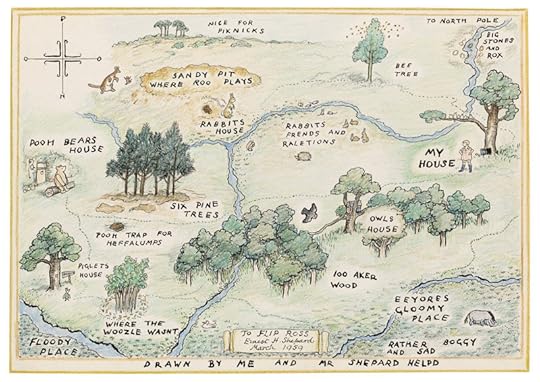 Drawn by E.H. Shepard, the brilliant original illustrator of A.A. Milne's quintessentially English Winnie the Pooh and The House at Pooh Corner, before their characters' poisonous disneyfication.
Drawn by E.H. Shepard, the brilliant original illustrator of A.A. Milne's quintessentially English Winnie the Pooh and The House at Pooh Corner, before their characters' poisonous disneyfication.
Published on July 06, 2013 00:26
July 2, 2013
BEFORE DAY-LEWIS' LINCOLN THERE WAS WM FAULKNER'S
William Faulkner drew this for his school yearbook in 1918. Which may seem odd, since he must have been at least 20 at the time... but he'd had to repeat two years' schooling, and never did graduate from high school.
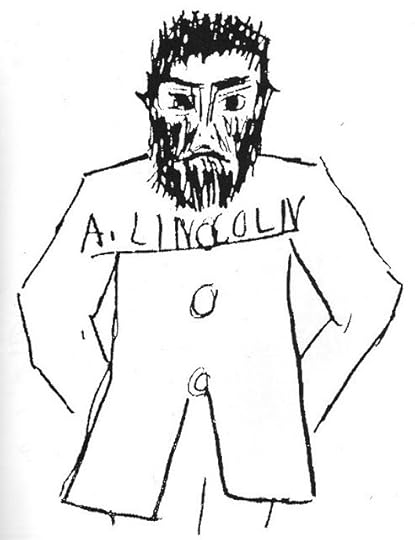 Taken from The Writers' Drawing Book, London: Redstone Press, 1994
Taken from The Writers' Drawing Book, London: Redstone Press, 1994
 Taken from The Writers' Drawing Book, London: Redstone Press, 1994
Taken from The Writers' Drawing Book, London: Redstone Press, 1994
Published on July 02, 2013 05:05

